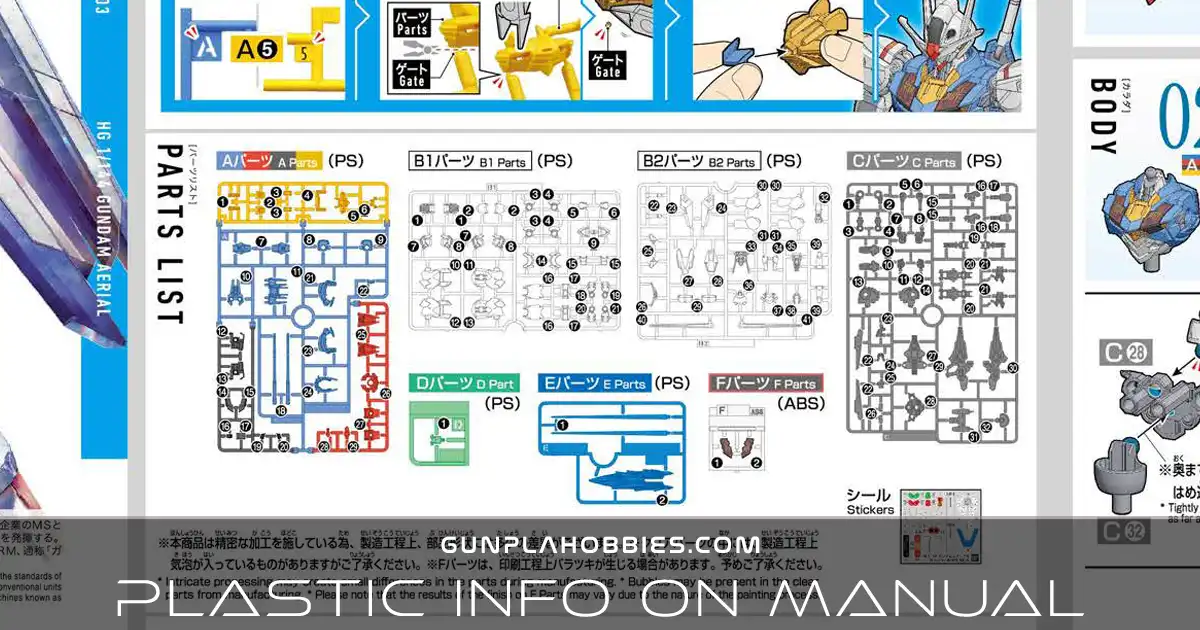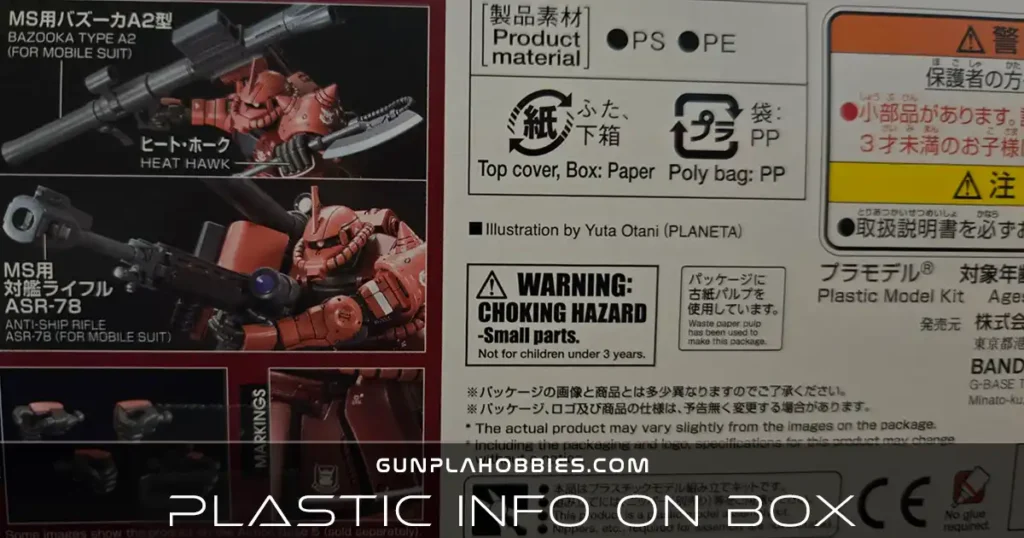How to Find Plastic Information in Your Gunpla Kit

Whether you’re a newcomer or a seasoned Gunpla enthusiast, understanding the types of plastic used in your Gunpla (Gundam plastic model) kits can significantly enhance your building experience. Knowing your materials helps you choose the right tools, apply the correct techniques, and make informed decisions about painting, sanding, or customizing. This article walks you through how to find plastic information in your Gunpla kit and what it means for your build.
Where to Find Plastic Info in Your Gunpla Kit
1. Check the Runner Labels
Each runner (plastic frame holding parts) in your Gunpla kit is marked with a letter (e.g., A, B, C) and often indicates the type of plastic.
How to Find It: Look at the corner tab of the runner—it typically says something like:

What It Means: The “PS” in this case shows the material—PS for polystyrene, ABS for tougher plastic, etc.
Pro Tip: Some runners might list multiple plastics if they contain mixed materials—pay attention to dual markings.
2. Look at the Instruction Manual
Bandai doesn’t always mention plastic types explicitly in the manual, but there are clues:
Parts List: Sometimes shows the runner and what it’s made from, especially for ABS or non-standard materials.
Color Codes: Shiny or metallic parts are often ABS. Polycaps (PC) and rubbery parts are listed under separate categories.
Note: If a part is labeled as “PC,” it’s likely made from polyethylene or a similar soft plastic.

3. On the Box
Some Gunpla boxes—especially for Master Grade (MG), Real Grade (RG), or Perfect Grade (PG) kits—include material information printed on the side or bottom of the box.
While not every kit includes this, when available, it’s a quick way to confirm which plastics are used across runners. This can be useful before you even open the kit or if you’re shopping and want to know which liners or paints will be safe.

4. Observe the Texture and Feel
If you’re customizing or painting, getting a feel for the plastic type is crucial:
- ABS parts are more rigid and have a slightly oily or waxy feel.
- PS parts are smoother and lighter.
- PC or polycaps are bendable and usually dull gray or black in color.
If in doubt, do a light sanding test on a sprue (frame) piece—ABS usually feels tougher and doesn’t sand as smoothly as PS.
Gunpla Plastic Types & Panel Lining Safety Cheat Sheet
| Plastic Type | Typical Runners | Notes |
|---|---|---|
| Polystyrene (PS) | A, B, C, D1, D2 (generally all outer parts runners) | Safe Methods: Mechanical pencils, Gundam Real Touch Markers, and Tamiya Panel Line Accent (used sparingly) are safe to use. Don’t Do This: Avoid excessive enamel washing without sealing and avoid flooding lines with harsh thinners. |
| Acrylonitrile Butadiene Styrene (ABS) | Frame runners in RG/MG/PG kits, often labeled E, F, G. | Safe Methods: Use mechanical pencils or water-based Gundam Real Touch Markers. Don’t Do This: Do not apply Tamiya Panel Line Accent without a protective topcoat, and avoid solvent-based pour-type markers. |
| Polyethylene (PE) | PC Runner (e.g., PC-001) | Safe Methods: Panel lining is not necessary; it’s best to avoid it. Don’t Do This: Do not use any paint, ink, or solvent on these parts as they will not adhere and may damage the surface. |
| Other (PP, POM) | Varies; uncommon in standard kits. | Safe Methods: These materials are generally not recommended for detailing. Don’t Do This: Avoid using paints, panel liners, or solvents as these plastics resist adhesion and may be damaged. |
Tip: Check the runner corner labels or the parts list in your manual to identify plastic types (e.g., “PS”, “ABS”, “PE”).
Knowing how to identify plastic types in your Gunpla kit arms you with the knowledge to build smarter, paint better, and avoid costly mistakes. From inspecting runner tabs to observing part texture, a bit of detective work goes a long way. Whether you’re aiming for a straight build or a full custom paint job, understanding your materials is the first step toward mastering the art of Gunpla.
Happy building—and may your nubs be minimal and your poses dynamic!

